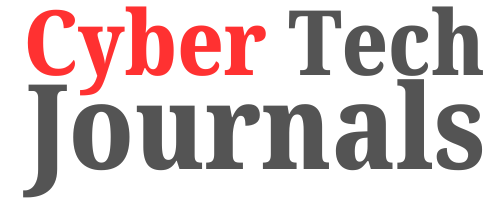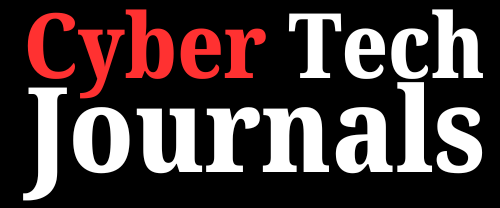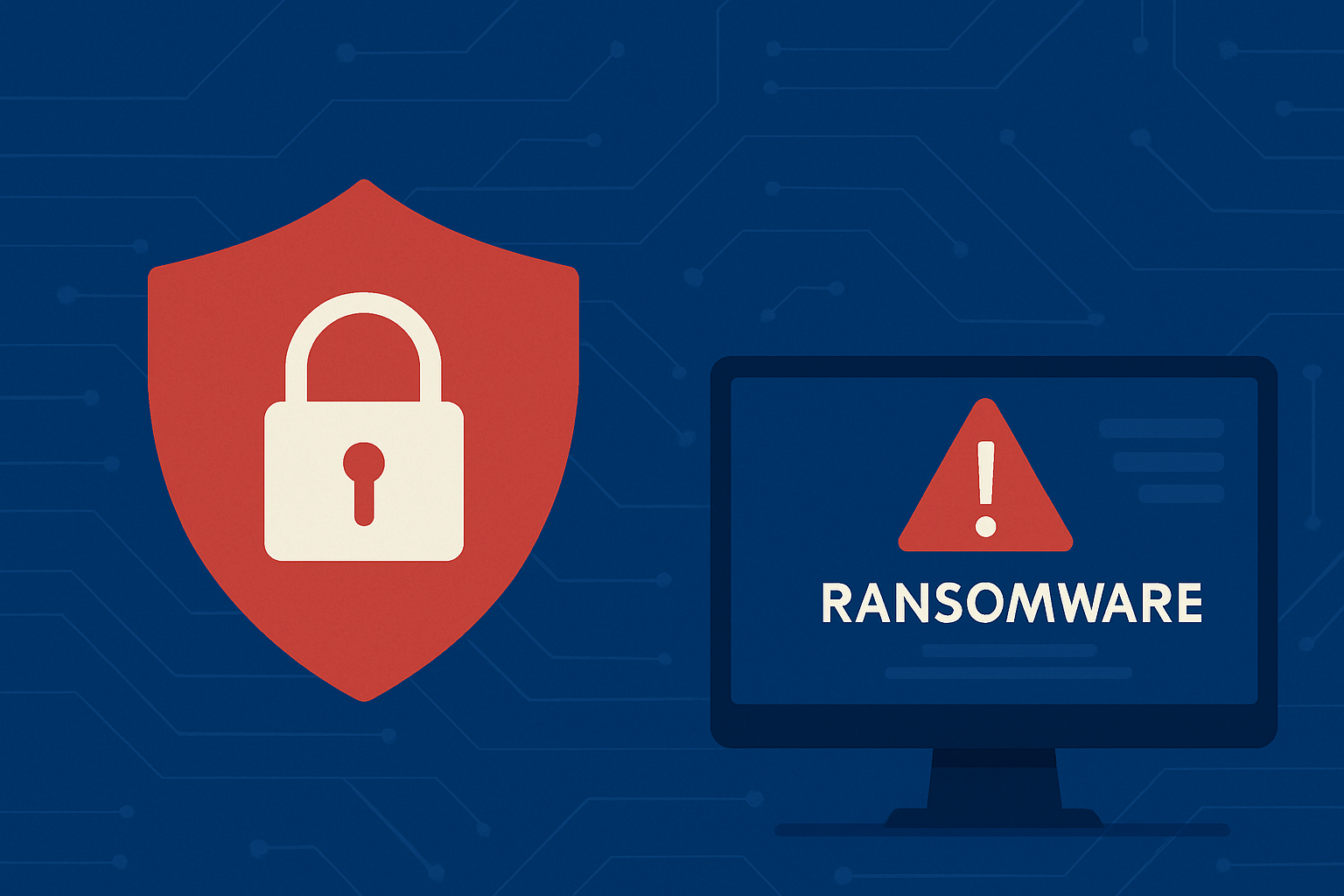You’re running a successful business, and every day feels like you’re protecting a castle from increasingly clever invaders. Twenty years ago, those invaders might have been simple pickpockets trying obvious tricks. Today? They’re sophisticated con artists with AI-powered tools, fake credentials, and the patience to study your defenses for months before striking.
That’s exactly what’s happening in the digital world right now, and it’s why finding the best business firewalls has become more critical than ever. Your business firewall isn’t just some boring IT equipment gathering dust in a server room – it’s your digital bouncer, your first line of defense, and quite possibly the thing standing between your company’s success and a catastrophic cyber attack.
But here’s the thing that keeps many business owners up at night: Is your current firewall actually ready for what’s coming in 2025?
At CyberTechJournals, we understand that staying ahead of cybercriminals isn’t just a good idea; it’s a necessity for survival. This comprehensive guide will dive deep into the world of business firewalls, exploring what makes them essential, the latest technologies, and which top players are leading the charge. We’ll help you understand how to choose the best solution to future-proof your organization’s security posture.
Key Takeaways
- Evolving Threats Demand Advanced Defenses: Traditional firewalls are no longer enough. Businesses need Next-Generation Firewalls (NGFWs) and cloud-native solutions to combat sophisticated AI-powered attacks, ransomware, and threats targeting hybrid work environments.
- Beyond Blocking: Key Features for 2025: Look for firewalls with deep packet inspection, advanced threat protection (sandboxing, IPS/IDS), application control, centralized management, and strong AI/ML integration for predictive threat detection.
- Top Players Lead Innovation: Vendors like Palo Alto Networks, Fortinet, Cisco, Check Point, and Sophos consistently rank high for their comprehensive security platforms, offering robust NGFW and cloud firewall capabilities that align with future security needs.
- Strategic Deployment is Crucial: Deciding between on-premise, cloud-based (FWaaS), or hybrid deployment models depends on your business’s unique needs, scalability requirements, and existing infrastructure.
- Future-Proofing Means SASE & Zero Trust: The trend towards Secure Access Service Edge (SASE) and Zero Trust Network Access (ZTNA) is reshaping firewall strategies, focusing on identity-driven access and security closer to the user, regardless of location.
Why Firewalls Are More Critical Than Ever in 2025 🚀
Remember the good old days when a simple firewall just blocked unwanted traffic based on IP addresses and ports? Well, those days are long gone! In 2025, the digital landscape is a complex maze of cloud services, remote workers, IoT devices, and ever-smarter cybercriminals. Your firewall isn’t just a gatekeeper; it’s a central nervous system for your entire security operation.
Projected Global Cybercrime Damages (2020–2025)
Let’s break down why this is so vital:
The Ever-Evolving Cyber Threat Landscape
Cyber threats aren’t just growing in number; they’re becoming incredibly sophisticated. We’re seeing:
- AI-Powered Attacks: Criminals are using artificial intelligence to craft more convincing phishing emails, automate reconnaissance, and develop polymorphic malware that constantly changes to avoid detection. This makes it harder for older security systems to keep up.
- Ransomware’s Relentless Rise: Ransomware continues to be a massive headache, holding businesses’ data hostage for huge sums of money. A strong firewall is your first line of defense against these crippling attacks, preventing them from even entering your network. For more on the impact, read about the hidden costs of ransomware attacks.
- IoT Vulnerabilities: Every smart device, from smart thermostats to networked security cameras, can be a potential entry point for attackers. Firewalls need to be smart enough to identify and segment these devices.
- Supply Chain Attacks: Attackers aren’t just targeting your company directly; they’re going after your trusted suppliers to get to you. This means your firewall needs to protect against threats coming from seemingly legitimate sources.
- Advanced Persistent Threats (APTs): These are long-term, highly targeted attacks where criminals quietly infiltrate a network and stay hidden for months, slowly gathering information or causing damage. A modern firewall can detect these subtle movements.
The Hybrid Work Revolution
The shift to hybrid work, with employees moving between office and home, has blurred the traditional network boundary. This means:
- Expanded Attack Surface: Your network isn’t just your office anymore; it’s every employee’s home Wi-Fi, coffee shop connection, and personal device. Each new endpoint is a potential vulnerability.
- Need for Consistent Security: How do you ensure the same level of protection for someone accessing sensitive data from their living room as you do for someone in the corporate office? Cloud-based firewalls and VPNs become crucial.
- Data in Transit: More data is moving outside the traditional network perimeter, making it essential to secure data on the move and at rest. Learn more about protecting your data with data loss prevention (DLP).
Regulatory Compliance & Data Governance
Governments and industry bodies are getting serious about data protection. Regulations like GDPR, HIPAA, and various national data privacy laws require businesses to implement robust security measures to protect sensitive information. A modern firewall, with its logging, reporting, and access control capabilities, is fundamental to proving compliance and avoiding hefty fines.
“In 2025, a firewall is no longer just a network device; it’s a strategic business asset that underpins resilience, compliance, and competitive advantage.”
Understanding Modern Firewall Technology (Without the Jargon)
Let’s break down what modern firewalls actually do, in plain English.
The Old Days vs. Today
Traditional Firewalls were like having a security guard who only checked IDs at the door. They looked at where internet traffic was coming from and where it was going, then decided whether to let it through based on simple rules.
Next-Generation Firewalls are like having a team of expert security professionals who don’t just check IDs – they also:
- Look inside packages to see what people are actually carrying
- Recognize specific applications and control how they’re used
- Identify individual users and apply personalized security policies
- Constantly update their knowledge about new threats from around the world
Cloud Firewalls: Security That Follows You Everywhere
Here’s where things get interesting. Cloud firewalls (also called Firewall-as-a-Service) are like having a personal security detail that protects you whether you’re at home, at the office, or anywhere in between.
Instead of having a physical box sitting in your office, your security runs from the cloud and protects your people and data wherever they are. It’s perfect for businesses with remote workers, multiple locations, or anyone who’s tired of managing complex hardware.
Web Application Firewalls: Protecting Your Online Presence
If your business has a website, an online store, or any kind of web application, you need specialized protection. Web Application Firewalls are like having a security expert who understands all the sneaky ways attackers try to break into websites and stops them before they can cause damage.
What to Look for in Your 2025 Firewall
When you’re shopping for a firewall, don’t get overwhelmed by the technical specifications. Focus on these key capabilities:
Advanced Threat Protection (The Non-Negotiable)
Your firewall needs to be able to:
- Test suspicious files in a safe environment before letting them into your network
- Recognize attack patterns and automatically block them
- Scan for malware in real-time
- Block access to malicious websites and prevent phishing attacks
Deep Packet Inspection (The Detail-Oriented Approach)
This is like having a security guard who doesn’t just look at the envelope – they actually read the letter inside. Your firewall should be able to examine the actual content of internet traffic, not just where it’s coming from.
Application Control and User Identity (The Personal Touch)
Your firewall should know who’s using what applications and be able to apply different rules for different people. Maybe your accounting team needs access to financial software, but your sales team doesn’t – your firewall should handle that automatically.
Centralized Management (The Sanity Saver)
If you have multiple locations or lots of remote workers, you need a firewall solution that can be managed from one place. Nobody has time to configure dozens of different devices individually.
AI and Machine Learning Integration (The Future-Proofing)
This is where firewalls get really smart. AI-powered firewalls can:
- Detect new threats that nobody’s seen before
- Predict potential attacks based on patterns
- Automatically adjust their defenses as threats evolve
- Reduce false alarms by learning what’s normal for your business
Cloud Firewalls (Firewall-as-a-Service – FWaaS)
With more businesses moving to the cloud, it makes sense for firewalls to move there too. FWaaS is a cloud-native firewall service that protects your cloud environments, SaaS applications, and remote users.
Benefits of FWaaS:
- Scalability: Easily scales up or down with your business needs without needing to buy new hardware.
- Flexibility: Protects users and data wherever they are, ideal for hybrid and remote workforces.
- Reduced Overhead: No hardware to maintain, patch, or upgrade. The vendor handles it all.
- Global Reach: Provides consistent security policies across geographically dispersed locations.
- Integration with SASE: FWaaS is a core component of the Secure Access Service Edge (SASE) model, which combines networking and security functions into a single cloud-delivered service. You can learn more about cloud security best practices to understand its importance.
Web Application Firewalls (WAFs)
While NGFWs protect your network, WAFs specialize in protecting your web applications from attacks like SQL injection, cross-site scripting (XSS), and other common web vulnerabilities. They sit in front of your web servers, inspecting HTTP traffic and blocking malicious requests before they reach your applications. This is especially critical for e-commerce sites, customer portals, and any business with a public-facing web presence.
SD-WAN Integration: The Network and Security Convergence
Software-Defined Wide Area Networking (SD-WAN) is changing how businesses connect branch offices and remote users. Modern firewalls are increasingly integrated with SD-WAN solutions, allowing security policies to be applied consistently across the entire network, regardless of location. This convergence of networking and security is a key trend, leading towards the SASE model.
The Players Worth Considering
Based on industry research and real-world performance, here are the firewall vendors that consistently deliver results. These companies regularly appear at the top of Gartner’s Magic Quadrant for Network Firewalls, which is considered the gold standard for enterprise security evaluations.
Palo Alto Networks: The Premium Choice
Think of them as the Mercedes-Benz of firewalls. They’re not the cheapest option, but they’re widely considered the gold standard for businesses that need the absolute best protection. Their threat intelligence is top-notch, and their cloud security solutions are excellent for businesses embracing remote work.
What Makes Them Stand Out:
- Comprehensive NGFW: Unmatched application and user identification with granular policy control
- Advanced Threat Protection: Industry-leading threat intelligence with WildFire cloud-based malware analysis
- Cloud Security: Strong presence with Prisma Access (their SASE offering) and Prisma Cloud for businesses migrating to hybrid work models
- Centralized Management: Panorama provides excellent management across large, distributed deployments
- Zero Trust Ready: Strong capabilities for implementing Zero Trust principles that NIST recommends for modern security architectures
Keep in Mind: Often at the higher end of the price spectrum, and their comprehensive feature set can be complex to manage without dedicated expertise.
Fortinet: The Performance Champion
Fortinet is like the Swiss Army knife of cybersecurity. They offer a comprehensive suite of security tools that work together seamlessly, and their firewalls are known for excellent performance without breaking the bank. They’re particularly strong if you need to connect multiple office locations securely.
What Makes Them Stand Out:
- High Performance: Custom-built security processors (SPUs and NPUs) deliver excellent performance and low latency
- Broad Portfolio: Wide range of security products that integrate seamlessly within their Fortinet Security Fabric
- Integrated SD-WAN: Leader in secure SD-WAN, perfect for businesses looking to converge networking and security
- Operational Simplicity: Unified management console (FortiManager) simplifies deployment and management
- AI-Powered Security: Leverages AI and machine learning in their FortiGuard Labs threat intelligence
Keep in Mind: The sheer breadth of their portfolio can sometimes be overwhelming for new users.
Cisco: The Network Integration Expert
If your business already uses Cisco networking equipment, their firewalls integrate beautifully with the rest of your infrastructure. They benefit from Cisco Talos, one of the world’s largest commercial threat intelligence teams, and offer solid protection for businesses of all sizes.
What Makes Them Stand Out:
- Network Integration: Deep integration with Cisco’s networking infrastructure for seamless policy enforcement
- Superior Threat Intelligence: Benefits from Cisco Talos’ massive threat detection capabilities
- Advanced Malware Protection: Strong capabilities for detecting and blocking advanced malware and ransomware
- SecureX Platform: Integrates security products across Cisco’s portfolio for simplified operations
- Cloud Security: Growing presence in cloud-delivered security services
Keep in Mind: Can be pricey, and managing their security solutions might require familiarity with the Cisco ecosystem.
Check Point: The Veteran Defender
Check Point has been in the security game for decades, and they know how to stop sophisticated attacks. They’re particularly good at preventing zero-day threats (attacks that nobody has seen before) and offer excellent centralized management. Their approach aligns well with CISA’s cybersecurity guidelines for enterprise threat prevention.
What Makes Them Stand Out:
- Strong Threat Prevention: Excellent track record in blocking zero-day threats with SandBlast sandboxing and Threat Emulation
- Unified Security Management: SmartConsole provides centralized management for all their security products
- ThreatCloud AI: Leverages a vast global threat intelligence network for real-time protection
- Scalability: Wide range of appliances and software blades to scale from small businesses to large enterprises
- CloudGuard: Robust cloud security solutions for public and private clouds
Keep in Mind: Some users might find their management interface less intuitive compared to newer competitors.
Sophos: The User-Friendly Option
Sophos is perfect for businesses that want enterprise-grade security without needing a team of experts to manage it. Their firewalls work particularly well with their endpoint protection, creating a synchronized defense system that’s greater than the sum of its parts.
What Makes Them Stand Out:
- Synchronized Security: Unique capability where the firewall communicates directly with Sophos endpoint protection for automated threat response
- Ease of Use: Known for user-friendly interfaces and simplified management
- Strong ATP: Robust advanced threat protection, including sandboxing and deep packet inspection
- Cloud Management: Sophos Central provides a single cloud-based platform for managing all products
- Value for Money: Good balance of features and cost, especially for SMBs and mid-sized enterprises
Keep in Mind: May not offer the same depth of highly specialized features as some enterprise-focused vendors for very large, complex networks.
“The best firewall for your business isn’t just about blocking threats; it’s about enabling your workforce, securing your data wherever it resides, and integrating seamlessly into your overall security strategy.”
Choosing the Best Business Firewalls
Choosing a firewall isn’t just about picking the one with the most features – it’s about finding the right fit for your specific situation.
1. Assess Your Needs & Risk Profile
- Business Size & Industry: A small business needs a different solution than a large enterprise. Highly regulated industries (healthcare, finance) have stricter compliance requirements.
- Network Complexity: Do you have multiple branches, remote workers, cloud environments, or a complex data center?
- Current Security Gaps: Where are your biggest vulnerabilities? Are you worried about web application attacks, ransomware, or insider threats?
- Traffic Volume: How much internet traffic do you handle? This impacts performance requirements.
- Existing Infrastructure: What other security tools (endpoint protection, SIEM, identity management) do you already have? Look for solutions that integrate well.
2. Budget Considerations
Firewall costs aren’t just the upfront purchase. Factor in:
- Hardware/Software Costs: The initial price of the appliance or software license.
- Subscriptions: Most advanced features (threat intelligence, ATP, IPS) are subscription-based.
- Maintenance & Support: Annual support contracts.
- Deployment & Configuration: Installation services, if needed.
- Training: For your IT staff to manage the new system.
- Scalability Costs: What does it cost to add more capacity or features as you grow?
3. Integration with Existing Security Stack
A firewall shouldn’t be an island. It needs to play well with your other security tools.
- Security Information and Event Management (SIEM): Your firewall should feed logs into your SIEM for centralized monitoring and threat correlation.
- Endpoint Detection and Response (EDR): Integration allows the firewall and endpoint to share threat intelligence and automate responses.
- Identity and Access Management (IAM): For user-based policies and Zero Trust initiatives.
- Cloud Security Posture Management (CSPM): If you’re using cloud firewalls, ensure they integrate with tools that manage your cloud configurations.
4. Managed Security Service Providers (MSSPs)
For many businesses, especially SMBs or those with limited in-house security expertise, partnering with an MSSP can be a game-changer. MSSPs can:
- Manage and monitor your firewall 24/7.
- Handle policy updates and patching.
- Provide expert incident response.
- Offer access to advanced security tools and expertise you might not have internally.
5. Future-Proofing Considerations
When making your choice, ask these questions:
- Does it support SASE or offer a clear path to SASE adoption?
- How does it leverage AI and machine learning for threat detection and automation?
- Can it easily scale to accommodate growth in users, devices, and cloud adoption?
- Does the vendor have a strong roadmap for future security innovations?
Deployment Models: On-Premise, Cloud, or Hybrid?
The physical location and delivery method of your firewall are as important as its features.
On-Premise Firewalls (Hardware Appliances)
These are physical devices installed in your data center or office.
- Pros:
- Full control over the hardware and data.
- Often preferred for very high-performance requirements in a localized environment.
- Can be cheaper for long-term, static deployments if you have the staff to manage them.
- Cons:
- Requires significant upfront investment in hardware.
- Needs physical space, power, and cooling.
- Requires in-house IT staff for management, patching, and upgrades.
- Less flexible for remote users and cloud environments.
Cloud Firewalls (Firewall-as-a-Service – FWaaS) ☁️
Delivered as a service from the cloud, protecting users and applications wherever they are.
- Pros:
- Scalability & Elasticity: Easily scales up or down based on demand.
- Flexibility for Hybrid Work: Secures remote users and cloud resources seamlessly.
- Reduced Operational Overhead: No hardware to maintain; vendor handles infrastructure.
- Global Coverage: Provides consistent security policies across dispersed locations.
- Integral to SASE: A core component for building a modern, cloud-centric security architecture.
- Cons:
- Reliance on the vendor’s infrastructure and uptime.
- Can incur ongoing subscription costs that might exceed on-premise over time for some scenarios.
- Less control over the underlying infrastructure.
Hybrid Deployment
Combining on-premise and cloud firewalls to leverage the strengths of both.
- Pros:
- Protects traditional data centers with on-premise appliances while securing remote users and cloud applications with FWaaS.
- Offers maximum flexibility and control.
- Ideal for businesses in transition to the cloud or with complex, mixed environments.
- Cons:
- More complex to manage due to multiple deployment models.
- Requires consistent policy enforcement across different platforms.
The Future of Firewall Security: Beyond 2025
The firewall market isn’t standing still. Here’s a glimpse of what’s coming next:
AI/ML’s Growing Role
AI and Machine Learning will move beyond just threat detection to:
- Predictive Security: Anticipating attacks before they happen by analyzing patterns and anomalies.
- Automated Policy Optimization: AI suggesting or even implementing firewall policy changes based on network behavior and threat intelligence.
- Adaptive Security: Firewalls automatically adjusting their defenses in real-time based on the evolving threat landscape.
Shift to SASE (Secure Access Service Edge)
SASE is the future. It’s a cloud-delivered architecture that combines network security functions (like FWaaS, SWG, CASB, ZTNA) with WAN capabilities (SD-WAN) into a single, integrated service. This simplifies management, improves performance, and provides consistent security for all users, devices, and applications, regardless of location. For more insights on securing your smart home devices, which are part of this expanding edge, check out securing your smart home devices from hacking.
In the dynamic world of cybersecurity, a firewall is no longer a static defense. For 2025 and beyond, it must be an intelligent, adaptive, and integrated component of your overall security strategy. By understanding the evolution from traditional to Next-Generation Firewalls, embracing cloud-native solutions, and focusing on key features like AI-powered threat detection and Zero Trust integration, businesses can build a truly future-proof digital fortress.
Quantum-Resistant Cryptography
While not mainstream yet, the threat of quantum computers breaking current encryption methods is real. Future firewalls will need to support quantum-resistant algorithms to ensure long-term data security.
Automated Threat Response
Firewalls will increasingly integrate with SOAR (Security Orchestration, Automation, and Response) platforms to automatically respond to threats, such as isolating infected devices, blocking malicious IPs, or initiating incident response workflows. This reduces the burden on security teams and speeds up reaction times.
Best Practices for Firewall Management and Optimization
Implementing a top-tier firewall is only half the battle. Proper management and continuous optimization are crucial to maintaining its effectiveness.
- Regular Updates and Patching: Always keep your firewall software and firmware up-to-date. Vendors frequently release patches to fix vulnerabilities and add new features. Ignoring updates leaves you exposed.
- Policy Review and Optimization: Firewall rules can become complex and outdated. Regularly review your policies (at least quarterly) to:
- Remove unused or redundant rules.
- Tighten overly permissive rules.
- Ensure policies align with current business needs and security best practices.
- Implement the principle of least privilege – only allow what is absolutely necessary.
- Logging and Monitoring: Your firewall generates a massive amount of logs. Don’t let them go unanalyzed!
- Integrate your firewall logs with a SIEM (Security Information and Event Management) system.
- Monitor for suspicious activity, failed login attempts, unusual traffic patterns, and policy violations.
- Set up alerts for critical events.
- Incident Response Planning: Know what to do when an alert fires. Your firewall is a detection tool, but you need a plan for how your team will react to potential threats. A well-defined 7 malware removal steps to take immediately can be a good start for your plan.
- Employee Training: A firewall protects your network, but human error is often the weakest link. Train your employees on cybersecurity best practices, including recognizing phishing attempts, using strong passwords, and understanding acceptable use policies. Understanding how to protect your account from password leaks and data breaches is vital for every employee.
- Regular Audits and Penetration Testing: Periodically test your firewall’s effectiveness with security audits and penetration testing. This helps identify misconfigurations or vulnerabilities that attackers could exploit.
- Backup Configurations: Regularly back up your firewall configurations. This allows for quick recovery in case of a device failure or misconfiguration.
“A firewall is a living defense system. It requires constant care, updates, and strategic adjustments to remain effective against the ever-evolving landscape of cyber threats.”
Firewall Feature Readiness Checklist
Check the features that are most important for your business’s firewall in 2025:
Firewall Feature Readiness Checklist
Check the features that are most important for your business’s firewall in 2025:
Your Selected Firewall Priorities:
Consider these features when evaluating the best firewall solutions for your business’s future security needs.
The Bottom Line: Your Security Investment for Tomorrow
Choosing the right firewall for 2025 isn’t just about technology – it’s about protecting everything you’ve built. Whether you’re running a small business or managing a large enterprise, the right firewall solution will:
- Protect your sensitive data from increasingly sophisticated attacks
- Enable your team to work securely from anywhere
- Help you meet regulatory compliance requirements
- Give you peace of mind knowing your digital assets are secure
- Scale with your business as it grows
The cyber threat landscape will continue to evolve, but with the right firewall strategy, you can stay one step ahead of the attackers. Don’t wait until after you’ve been hit to upgrade your defenses – the best time to fortify your digital fortress is right now.
Remember: In cybersecurity, you’re not just buying a product – you’re investing in your business’s future. Choose wisely, and your firewall will be the silent guardian that lets you focus on what you do best: running your business.













Leave a comment